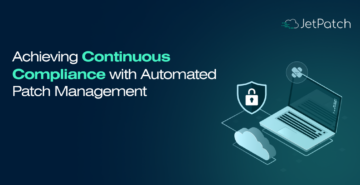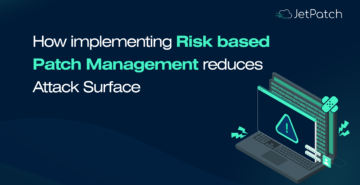It sounds like something out of a science fiction novel–except this new Gartner report says it’s actually this year’s leading tech trend :hyperautomation.
Hyperautomation is the next iteration of a combination of tools: robotic process automation (RPA), intelligent business management software (iBPMS), AI, and machine learning (ML). Together, they fill in for human workers and take over repetitive tasks.
According to Gartner, hyperautomation will soon offer real-time continuous organizational intelligence, “driving significant business opportunities.” While it’s not quite here yet, it will potentially turbocharge almost every aspect of your business, from CRM to HR to finance and beyond.
And what about cybersecurity? Are we going to see an army of virtual sentries in the near future patrolling our organizations’ boundaries and internal networks, keeping an eye out for suspicious behavior of all kinds?
The truth is, hyperautomation is almost here. Is your business ready?
Feeling the Pressure
So far, 2020 has done a great job of highlighting the pressure we’re all under to get the job done when it comes to IT and information security.
Every organization has spent this year scrambling to do more with less–less infrastructure, fewer team members–and supporting off-site workers on a vast range of platforms. Everyone’s struggling to be more efficient, and hyperautomation seems like the perfect answer.
Even before COVID-19, there were challenges, with factors like regulatory compliance creating a constant stream of more and bigger data to track as well as introducing more potential sources of vulnerability for hackers to prey on.
So Where Are We Today?
As professionals in IT and Security, you know these are unique times, with every department member pushed to the limit.
Everybody fantasizes about handing routine tasks over to robots that will obediently take care of them all. But just like with the first generations of robotic vacuum cleaners, which didn’t live up to the hype, we’re not quite there yet.
There’s a lot of creative thinking going on, and not every brilliant idea will ultimately succeed in practical terms, but the trend toward finding ways to automate will ultimately help us optimize manual processes of all kinds. It will save time, make processes smoother, and maybe compensate for the inevitable human mistakes when faced with repetitive tasks.
But there are always going to be tasks that need a human behind the wheel. Think about self-driving cars. Given that 94% of accidents are caused by human error, according to the US Department of Transportation, an autonomous car might be safer in many ways. But today’s sensor technology is only about a tenth as good as humans at predicting pedestrian actions.
The message? Any robot can drive a car—but only a human being can make eye contact and predict whether that woman standing on the curb will step out into traffic or stay back safely.
State of the Art
There is a definite rise in automation across almost all industries. All the major players have released their own AI engines designed to automate business functions: IBM Watson, Amazon Lex, Microsoft Azure Cognitive Services, Google AI. And use cases for automation and AI are everywhere, from visual recognition (e.g., medical imaging and defect detection in manufacturing) to natural language processing (e.g., speech recognition to help kids learn to read) to lead generation (e.g., SalesForce’s Einstein AI and its integration with IBM Watson).
Beyond all this, robotic process automation (RPA), the next iteration of AI and ML, is also on its way. KPMG defines RPA as “special-purpose software programmed to be used with data and rule-based processes to replace or supplement repetitive tasks normally handled by humans.”
RPA offers the same “holy grail” combo as AI and ML: cost savings, getting more done with a smaller team, and reducing the number of tools needed, all while ensuring enterprise-wide security.
KPMG estimates that the global RPA market will hit $5B this year. Applications will range from the simple, such as email response bots, to the complex, like automating tasks within an ERP system, which TechCrunch calls a “growing movement to bring intelligence to all aspects of enterprise software.”
Because RPA is cheaper and easier to implement than full-on AI and ML, a May 2020 Gartner report anticipates that 90% of large and very large organizations will have deployed some form of RPA by year-end 2023.
What About Vulnerabilities?
So there’s the billion-dollar question. If there’s anywhere hyperautomation is needed, it’s in the realm of cybersecurity, specifically in vulnerability assessment and remediation. Every CIO out there probably dreams of automated smart sentries that can learn on the job.
Smart players in the market are moving in this direction already. Within a few years, we’ll most likely see integrations with leading AI engines, harnessing ML capabilities to handle high-volume repeatable tasks.
But in the meantime, there are tools to help take some of the work off of your shoulders. Built from the ground up, solutions today can help your team define security goals—assessment, prioritization, and remediation—and accomplish them faster. JetPatch is one tool that’s steering organizations toward the hyperautomation future.
JetPatch offers automated asset discovery to help you stay on top of all of your resources, while intelligently tracking all relevant updates and patches. It also automates and simplifies remediation in various ways, like with predictive patching, which uses ML to reduce downtime, and simplified dashboards, which unify your entire environment.
Sowing the Seeds
It’s exciting to see what’s happening around the nexus of AI, ML, and RPA in almost every industry, sowing the seeds of the next-gen solutions to come. But, while the tech side is fun to watch, the goal of hyperautomation is exactly what we at JetPatch have always put first: taking the burden off of your team’s shoulders.
By constantly updating, improving, and optimizing our predictive algorithms, JetPatch gives you cutting-edge security without the hassle. We love trends as much as anyone else, but we don’t chase trends. Instead, we focus on the big picture: doing everything we can to make your job easier.



